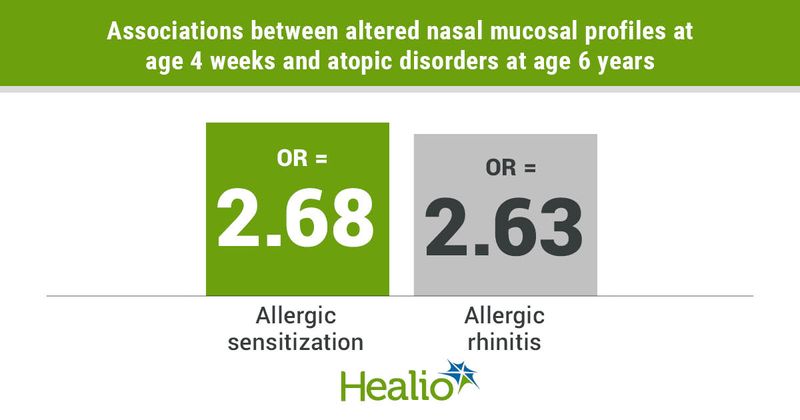Prenatal exposure to air pollution associated with allergic rhinitis, asthma risks
Key takeaways:
- Higher prenatal exposure to nitrogen dioxide and particulate matter was associated with altered nasal mucosal immune profiles at age 4 weeks.
- These associations conferred increased odds for allergic sensitization and allergic rhinitis at age 6 years.
- Altered immune profiles in blood at age 6 months appeared associated with an increased risk for asthma at age 6 years.
Prenatal exposure to air pollution appeared linked to early-life immune perturbations that in turn increased risk for allergic rhinitis and asthma, according to a study published in The Journal of Allergy and Clinical Immunology.
These results indicate possible mechanisms behind the effects that pollutants have on the developing immune system, Casper-Emil Tingskov Pedersen, PhD, postdoctoral researcher with Copenhagen Prospective Studies on Asthma in Childhood (COPSAC), Herlev and Gentofte Hospital, University of Copenhagen, and colleagues wrote in the study.

COPSAC includes 700 children born to women living in Zealand, Denmark, who enrolled in the study at 24 weeks’ gestation.
At age 6 years, 22.4% of the children had been diagnosed with asthma at any time, 23.7% were sensitized to inhalant allergens, 7.4% currently had asthma and 6.7% currently had allergic rhinitis.
The researchers found associations between higher prenatal exposure to nitrogen dioxide (NO2) and particulate matter at 2.5 µm (PM2.5) and 10 µm (PM10) and an altered nasal mucosal profile at 4 weeks.
Also, the researchers noted changes in type 2 immune mediators related to atopy at 4 weeks, including increased levels of IL-13, IL-4 and IL-5 and reduced CCL22 and CCL26 levels, associated with prenatal air pollution exposure.
Children with this nasal mucosal profile demonstrated increased odds for allergic sensitization (OR = 2.68; 95% CI, 1.58-4.62) and for allergic rhinitis (OR = 2.63; 95% CI, 1.18-5.81) at age 6 years.
There was a strong association between prenatal air pollution exposure and systemic inflammatory markers measured in blood at age 6 months as well, including increased levels of CXCL8 (IL-8) and decreased levels of IL-1beta for all pollution and decreased levels of IL-6 for increased NO2 exposure.
Presence of this altered immune profile in blood at age 6 months conferred an increased risk for current asthma at age 6 years (OR = 1.8; 95% CI, 1.18-2.76), but not for allergic rhinitis or allergic sensitization.
However, there was no robust association between prenatal exposure to ambient air pollution and nasal mucosal immune mediators, epithelial DNA methylation or gene expression changes in nasal cells at age 6 years. Further, when researchers evaluated postnatal exposure to ambient air pollution, they found an increased risk for current asthma at age 6 years for all three pollutants, although adjusting for urbanicity rendered these associations nonsignificant except for the association between PM10 exposure and current asthma.
According to the researchers, these findings indicate the independent effect that prenatal air pollution exposure may have on the developing upper airway and systemic immune system in early life, including potential long-term effects on allergy and asthma development risks.

